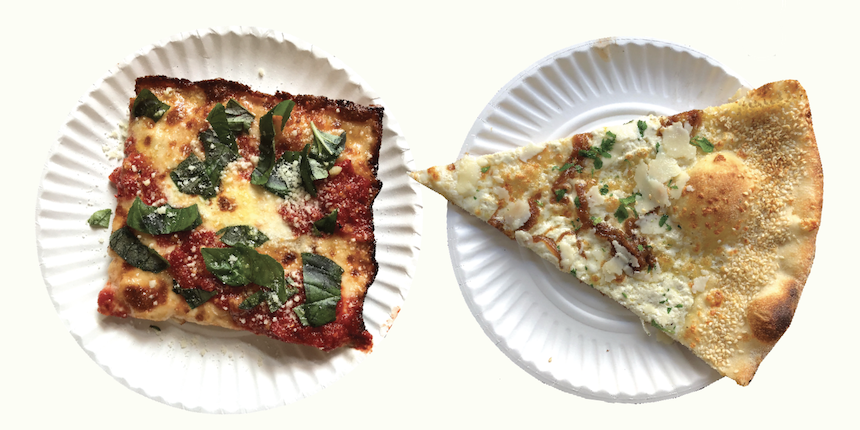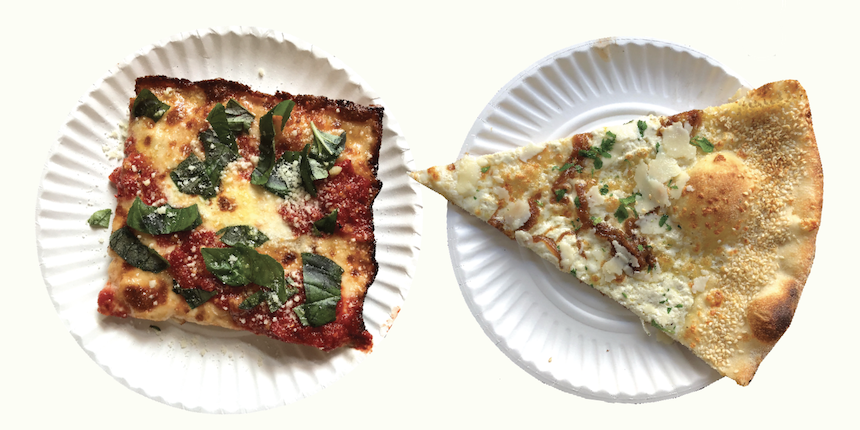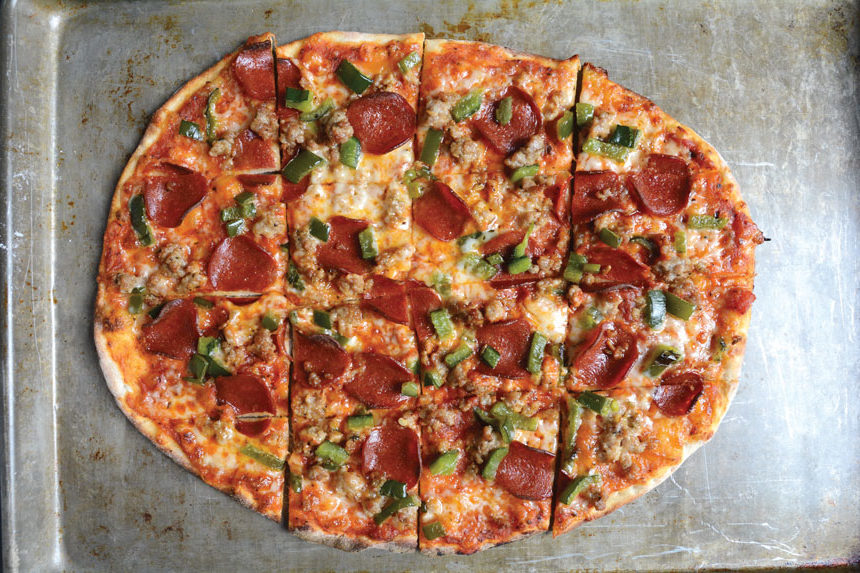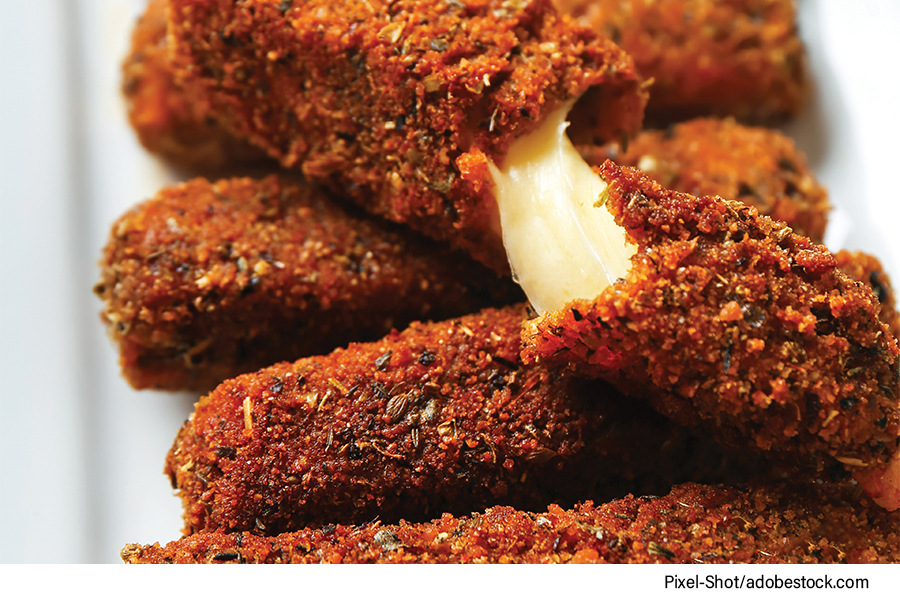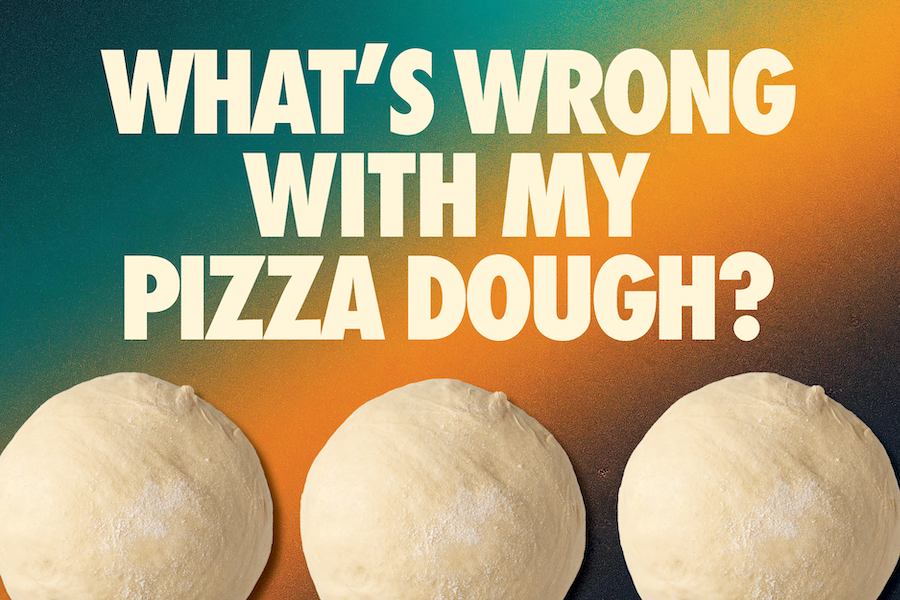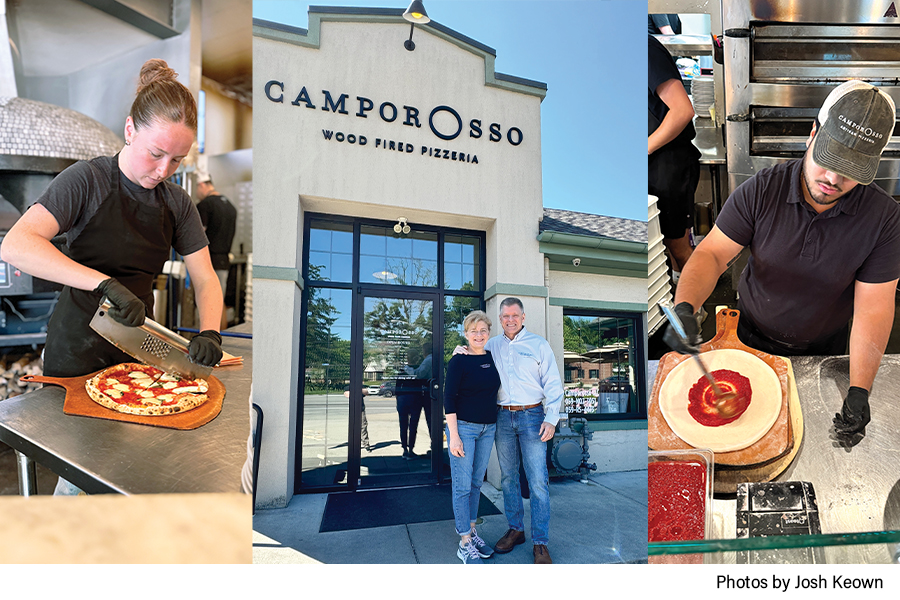My take on the quintessential classic New York Style Pizza
John Updike famously said, “The true New Yorker secretly believes that people living anywhere else have to be, in some sense, kidding.” In my lifetime of visiting New York City, and the 14 years that I have I called the city home, I think I can safely say that your average New Yorker feels that people eating pizza anywhere else have to be, in some sense, kidding.

Anthony Falco, International Pizza Consultant and former “pizza czar,” Roberta’s, Brooklyn
There is a confidence and braggadocio about all things New York City — and pizza is no exception. It’s indisputable that there are thousands of pizzerias in the five boroughs. It’s also true that there is a culture of pizza here unique to the world, but what is true New York-style pizza? It’s a difficult question, really, but one I have given much thought to. You could say pizza by the slice is the true New York pizza, but what about the famous coal-fired oven pizzerias that only do whole pies? You could say it’s the stone-lined gas deck oven, but today some of New York’s best pizza is coming out of electric or even wood-fired ovens.
So where is the common ground? What defines NY-style pizza? While not everyone will agree, and since I wasn’t born in the city I’m sure certain people will leave my opinions on the sidewalk with piles of ubiquitous garbage, I’ll state my opinion after years of making pizza in New York, and making New York-style pizza around the world.
What differentiates New York Style Pizza?
First things first, like the skyscrapers and personalities of the city, it is big. NY-style pizza tends to be 16 to 20 inches with the classic NY slice being cut from an 18-inch pie. Anything less just won’t look right on a paper plate. And speaking of paper plates, NY pizza is for people on the go, that means eating it quick, with your hands, almost always standing up.
It’s thin, but not paper thin like the cracker style crust found across the Hudson in New Jersey. And it’s crisp, but with some pliability — it shouldn’t shatter when you take a bite. The sauce should be simple, fresh and slightly sweet with a balance of acidity, my choice for achieving this is the California tomato.
The mozzarella should be stringy, but not too wet, and it should form a cohesive unit with the sauce. This amalgamation of sauce and cheese adheres to the dough, and it doesn’t slip off when it’s lifted to the mouth like its Neapolitan cousin. In practice this means a “low moisture” mozzarella, essentially a more aged version of fresh mozzarella (sometimes it’s whole milk, sometimes part skim, or sometimes a blend). Fresh mozzarella is totally acceptable too, just less prevalent than low moisture.
Toppings should be judiciously applied and not overloaded like they do in certain windy cities. In fact, one could say that the most true example of the New York pizza is the humble “plain slice”: tomato, mozzarella, oregano, and maybe a little pecorino or Parmesan.
So let’s summarize; a NY-style pizza is big, it’s thin but not paper thin, crispy but still flexible enough to fold without cracking, and the toppings should be a cohesive amalgamation and applied with restraint and simplicity. It shouldn’t be too fancy, but that doesn’t mean you can’t use quality ingredients. It should always be cooked directly on the stones of the oven floor, be that gas, wood, electric or coal.
How to Make New York Pizza
So now that we have defined what New York Pizza is, how do we make it? Well, I’m going to be completely honest … I have no idea how to make a proper NY-style pizza. I have never trained or worked at a proper old school New York style pizzeria. I came up cooking in wood-fired ovens, I was cooking small, new-school Neapolitan-ish pizzas fast and hot and topped with globs of fresh mozzarella, definitely the same galaxy but still worlds apart. About five years ago I started playing with NY-style pizza. I thought I would just come in with what I knew, crank the oven all the way up and start kicking butt. That is not what happened. I learned very quickly that NY-style pizza is actually one of the most difficult styles to master. I knew what I wanted the pizza to be like, but I wasn’t sure how to get there. I went into the laboratory, aka my kitchen in Brooklyn, and I started playing around with different flours, temperatures, cheese blends and so on. Eventually I got something I liked, and since then I have helped open NY-style pizzerias as a consultant in Manhattan, Brooklyn, Bangkok, Miami and Bali, with more in the works. Every one of these takes on NY-style pizza has been a different approach, from all naturally leavened, a hybrid of sourdough and commercial yeast, and even all commercial yeast. The reception has been great and these are some of my favorite pizzas to eat anywhere.
In the last few years a growing number of pizza consulting inquiries want to do NY-style pizza. And in the last year, the pandemic has proven this style to be built for durability. It holds up well for takeout, delivery, people on a budget, as well as people looking to splurge on a meal they wouldn’t normally make at home.
Anthony Falco’s New York Style Pizza Dough Recipe
So let me share with you a recipe that you can try if you are interested in bringing New York-style pizza to your pizzeria. The ingredients are important for this pizza. I prefer a high-protein American bread flour. You can add in small amounts of semolina (durum wheat) at 5 to 10 percent if you want to up the crisp levels on a flour with less protein.
For the water, it’s true that New York has great tap water, but so does Palm Springs, California! If you have great tap water in your town use that, otherwise a well filtered or spring water from a delivery service should do just fine. New York City tap water is low in total dissolved solids with very little chlorine, and just the right minerality, but it’s not magic, so don’t go crazy thinking about it. If it tastes good as drinking water it will taste good in the pizza.
For olive oil, I highly recommended a California extra virgin olive oil. It’s fresh and clean and really works well with this style of pizza. Also, I like sea salt for my pizza and I think it makes a huge difference, but kosher salt will also work. If you only have iodized table salt you need to get rid of it and upgrade your salt game.
The recipe will call for a starter. If you don’t have a sourdough starter you can use a commercial yeast pre-ferment (aka poolish, biga or sponge). Some people don’t like sourdough in NY-style pizza. That’s their opinion, but mine is that it is delicious. Do whatever you want to do and never listen to the haters. These are all just guidelines — follow your dreams.
When topping the pizza you should always start by making a classic plain pie. I recommend a tomato sauce of uncooked California tomatoes, seasoned simply with sea salt and extra virgin olive oil. For mozzarella a blend of low moisture whole milk and part skim mozzarella is great, but if you want to use fresh mozzarella, that can work too. I’m a big fan of the mozzarella down first method, splotching the tomato on top with a little space between, and finally some oregano (wild Sicilian is always my first choice) and a little hard cheese (a pecorino or grana works great). The key is a balance between the toppings so that they all come together on the pie in a cohesive way, clinging onto rather than easily slipping off of the dough.
And for my final thoughts before you try the recipe is that it is my interpretation of NY style, it’s not authentic or the ultimate or anything like that, it comes from loving this style of pizza and trying to make it through my lens as a pizza maker. I hope you enjoy it and add this style to your repertoire. Go to the recipe now.
Anthony Falco is an international pizza consultant.


